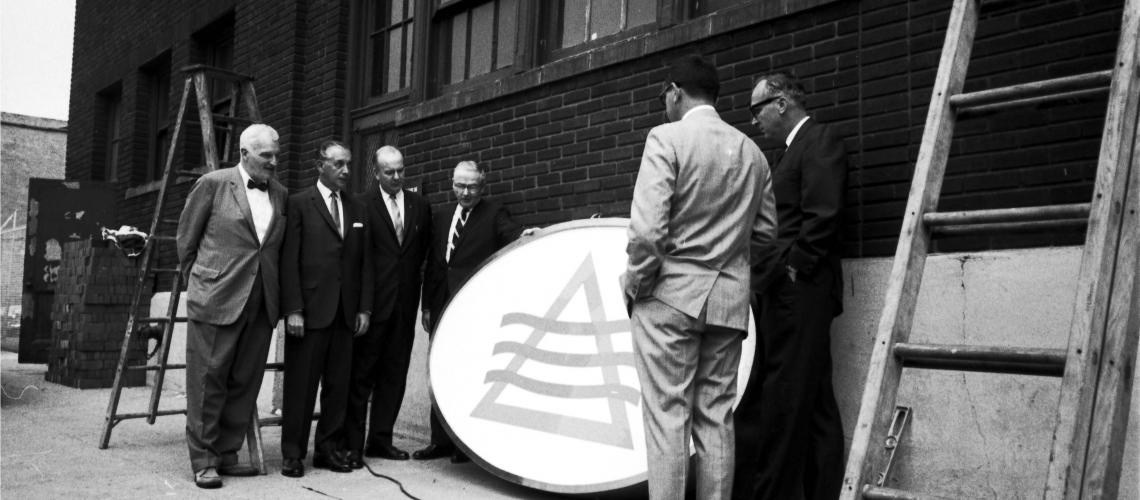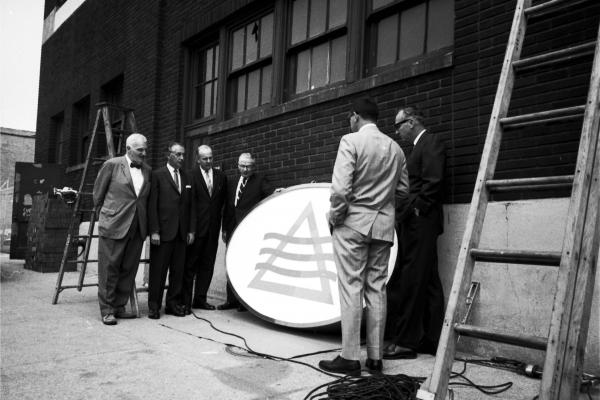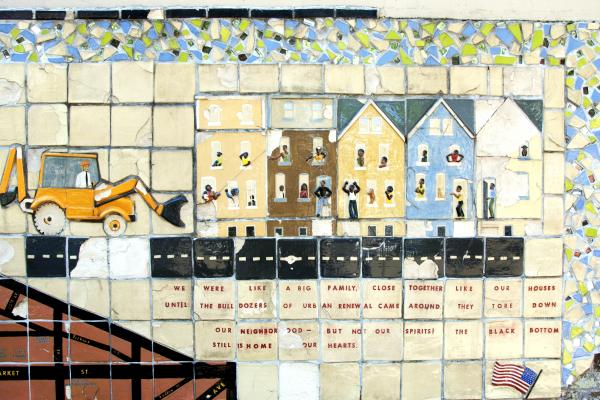The West Philadelphia Corporation
The West Philadelphia Corporation, a non-profit coalition formed by local “higher eds and meds,” created and marketed the neighborhood of “University City.”
The West Philadelphia Corporation (WPC) was created by a coalition of West Philadelphia education institutions to address the growing disparity between their campuses and the communities surrounding them. The spurring event was the 1959 murder of a Penn graduate student by young local residents. The goal was to create a city environment “compatible” with the WPC member organizations. The most notable of the efforts was the marketing University City, a new name for the area surrounding Penn, Drexel, and the University of the Sciences. The heart of the University City would be the University City Science Center, which was created to attract new scientists and academics to the area.
Founded in the aftermath of the murder of a Penn graduate student in Powelton Village, the West Philadelphia Corporation (WPC) was a major not-for-profit, community development organization formed by a coalition of “higher education and medical institutions that included the University of Pennsylvania as the senior partner and the Drexel Institute of Technology (now Drexel University), the Philadelphia College of Pharmacy and Science (now University of the Sciences in Philadelphia), Presbyterian Hospital (now Penn Presbyterian Medical Center), and the Osteopathic Medical School (now Philadelphia College of Osteopathic Medicine) as the junior partners. The WPC established the boundaries of “University City” (the brand name the planners gave to this “artificial neighborhood” located in the Philadelphia City Planning Commission’s University Area Redevelopment Area, an urban renewal zone first defined in 1950).[1]
The University Center Science Center was the major project of a multi-pronged WPC strategy to redevelop or upgrade residential and commercial blocks in the newly branded University City. Incorporated in 1963 and built from 1967 in the Market Street corridor of Redevelopment Unit 3--one of five planning units designated for the University Redevelopment Area by the Redevelopment Authority (RDA) of Philadelphia—the Science Center arose in an existing neighborhood known locally as the Black Bottom, whose majority-Black residents were insensitively displaced by the RDA. The Science Center was touted as the nation’s first and largest urban research park; yet in its first half-century, it would operate far more as a real estate developer than as a recruiter of R & D (its buildings would house many decidedly non-scientific enterprises).[2]
Penn, the majority shareholder in the West Philadelphia Corporation and the primary mover and shaker in the development of the Science Center, saw its community relations virtually destroyed by the 1970s and its reputation badly tarnished by the removal of Black Bottom residents for decades thereafter.[3]


